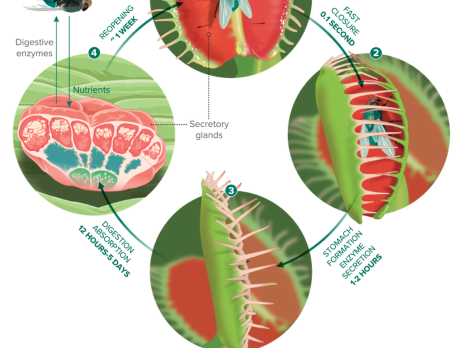How do the Venus Flytrap’s trigger hairs work?
The Venus Flytrap's trigger hairs are specialized sensory structures located on the inner surface of its modified leaves, called traps. The trigger hairs are tiny, hair-like projections that are sensitive to touch. When an insect or other small prey lands on the Venus Flytrap's trap, it may brush against one or more of the trigger hairs. This triggers a series of electrical signals that travel through the trap and stimulate the release of digestive enzymes. The Venus Flytrap's trigger hairs work by...










